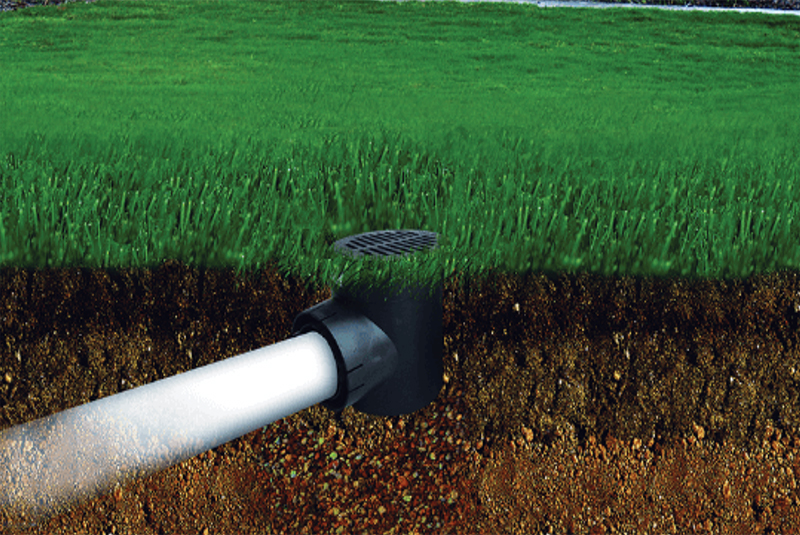Surface water is one of the largest nuisances you will find when identifying drainage issues. The most obvious clue will always be the appearance of standing water that lingers for days after a rain event. Another clue to look for is the feeling of a “squishy” or saturated area of lawn. This area will often be completely soaked; meaning that a contractor will not be able to run a mower over that space, which causes labor inefficiencies. This issue would need to be addressed not only for ease of maintenance reasons, but also to eliminate a potential breeding ground for mosquitos, the prevention of fungus related issues and other potential damage.
The overarching principle of an effective drainage system is to create a strategy for how to deal with water at the subsurface level vs at the surface level. Several methods can be used to accomplish this:
- Capture the water at the surface level and convey it to a discharge pipe
- Capture the water at the surface and convey it to a storage system
- Allow water to infiltrate into the soil and store/convey the water via a French Drain.
1. Capturing the Water and Conveying it to a Discharge Pipe
The first option is the simplest and can be achieved if you have enough pitch on the property and a place to safely discharge the water.
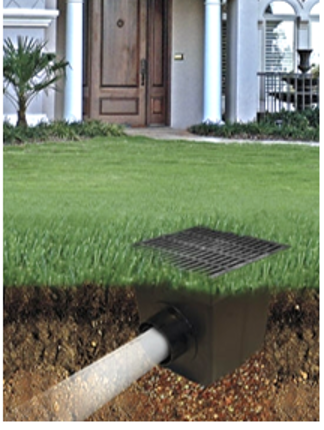
Special attention should be paid to making sure that you are not just creating a problem somewhere else on the property or in an adjacent property. A community retention/detention basin would be an ideal solution as long as the community stormwater system allows for discharge into their system by an outside source. Please check local ordinances before discharging water off of any property.
2. Collect Water at the Surface and Move it to an Area Where it Can Be Stored
On a small residential scale, a manufactured dry well, such as an NDS Flo-Well, serves to store stormwater so it can easily and invisibly recharge groundwater at a subsurface level. It is important to keep in mind that having an overflow as a relief for this kind of system is critical. In the event of an extremely heavy period of rain that is capable of overflowing the system, having a discharge route leading out of the storage system is key to help prevent it from becoming overwhelmed and not being able to handle the sudden increase of water.
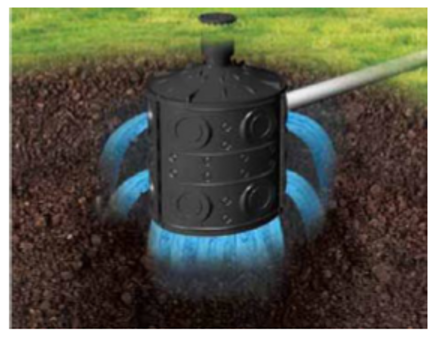
Flo-Wells are a great solution for small scale residential projects and are scalable since they can be “stacked” or run in sequence with one another. A calculator can be found by using the link below to help identify how many you would need to incorporate for a successful and effective drainage project.
https://www.ndspro.com/tools-and-calculators/flo-well-calculator
Both Methods 1 and 2 work well when we can identify a specific area where the water is pooling or that is clearly soaked from collecting rain/run-off.
3. French Drains
If the problem area spans across a much larger area, a French Drain would be a more effective solution. The advantage of using a French drain is that it can be laid out underneath an entire area and allow for this surface water to be managed underground. French Drains are commonly used for athletic fields but can easily be scaled down to work on a residential property. A typical cross section of a French Drain is below.
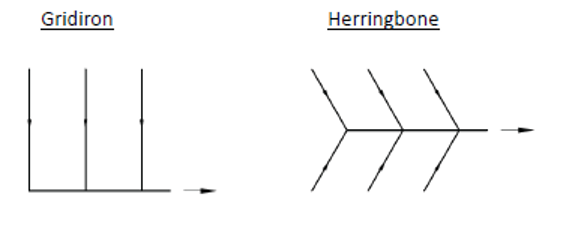
When using nonflexible pipes such as PVC, a gridiron or herringbone pattern is the most effective layout to allow the water to infiltrate into the ground evenly throughout the space.
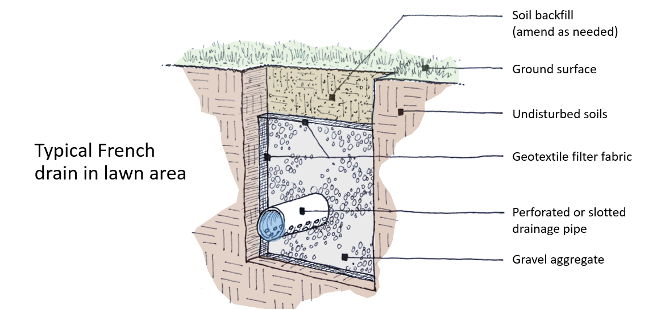
If we use corrugated flexible pipe, we are no longer bound by the above layouts. An irregular layout is possible when using flexible pipe and can be manipulated any way that is needed, without the constraints of common angled rigid fittings.
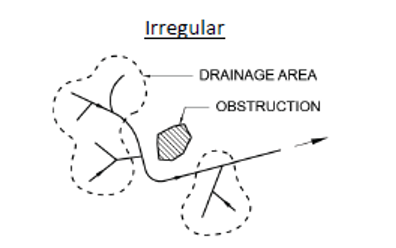
You have more option and control when using flexible pipe. A traditional French Drain installation can still be used even when swapping the rigid pipe for flexible pipe. Another option is to use a specially engineered product such as NDS EZ-Flow. EZ-Flow eliminates the need for additional fabric and gravel and can lead to a significant amount of savings in terms of material and labor costs.
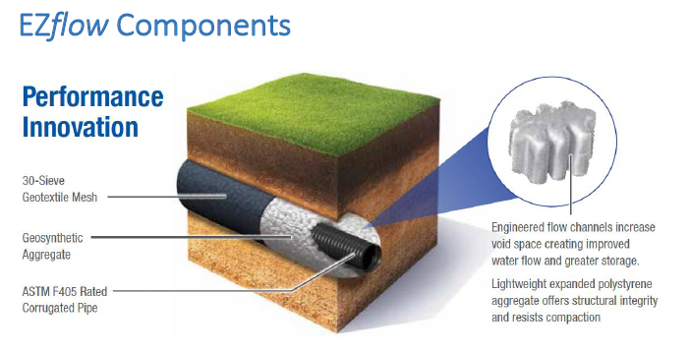
To find out more information about EZ-Flow Drainage Pipe, use the link below.
https://www.ndspro.com/products/drainage/french-drains/ezflow.html
While any French Drain solution will help on its own, the best results will always occur if the pipe has somewhere to discharge. Most times, this discharge will be minimal, but best practice is to have somewhere for the excess water to go to at all times.
Finally,
Central Turf & Irrigation Supply is your source for all your drainage needs. We are fully stocked with PVC, Dual Wall and corrugated pipe. We also carry catch basins, pop-up emitters, channel drains and fittings to make sure your project is complete. Our Drainage Category Director, Eric Cummings, has over 25 years in the industry and is a valuable resource for Central customers. Regardless of scope and size, Central is your partner in drainage and is always here to help you tackle any residential or commercial job site!

